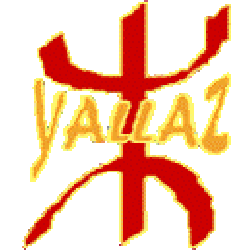|
Bread is the protagonist of every meal, used instead of forks or spoons to get the food from
a common plate.
The tajine, meat (sheep, beef, lamb, goat, chicken) or fish, with vegetables, gets its name
from the typical earthen pot where it is cooked. That is a very common dish in every home or restaurant, but long to
be cooked (more then two hours): so it should be better tasted home made than in restaurants, where it is often
pre-cooked.
The couscous, Friday dish, is a bran flour, creamed coloured, steamed over a very flavoured
soup of meat and vegetables, all served together.
Olives, of different colour and size, conserved in lemon juice and salt, are another
essential element in Moroccan cuisine, used in many recipes and occasions.
The bastilla, for special events such as weddings, is a peculiar mix of meat (pigeon, beaf or
chicken), creamy lemoned eggs and almonds: baked or fried, within puff pastry, is dressed with icing sugar and
cinnamon. As for tajine, home made tasting is advisable.
The mechoui, lamb directly grilled on fire coal, is the protagonist of Aid al Kebir (great
feast, or Fete du Mutton), happening in the first month of the Islamic calendar (ashora).
The brochette (spit grilled meat) is maybe the most common dish you can find in any
restaurant or coffee: beef, lamb, goat, chicken, kefta (minced meat), but even liver and
entrails.
The characteristic dish of Marrakech is the tanjia, meat or fish solo, baked in a specific
earthern amphoraput for hours and hours in the wodden hammam oven.
There are two types of soup: the harira (hot mix of pulses, meat, tomatoes, spices) and the
bissara (broad beans and lentils), proper for cold winter breakfasts. During the ramadan,
when breaking the fast, harira and dates are the main course.
The Moroccan pastries are various, and main ingredients are almonds, honey, seeds (sesame,
pistachios). They are tasted alone or combined with the typical mint tea (green tea with
large leaves with small leaves of fresh mint and lots of sugar), the true symbol of Moroccan cuisine.
|
|

mint tea

mutton tajine with prunes

berber tajine

tajine with kefta and eggs

moroccan salad

tanjia

couscous

gazelle horns
|
|

